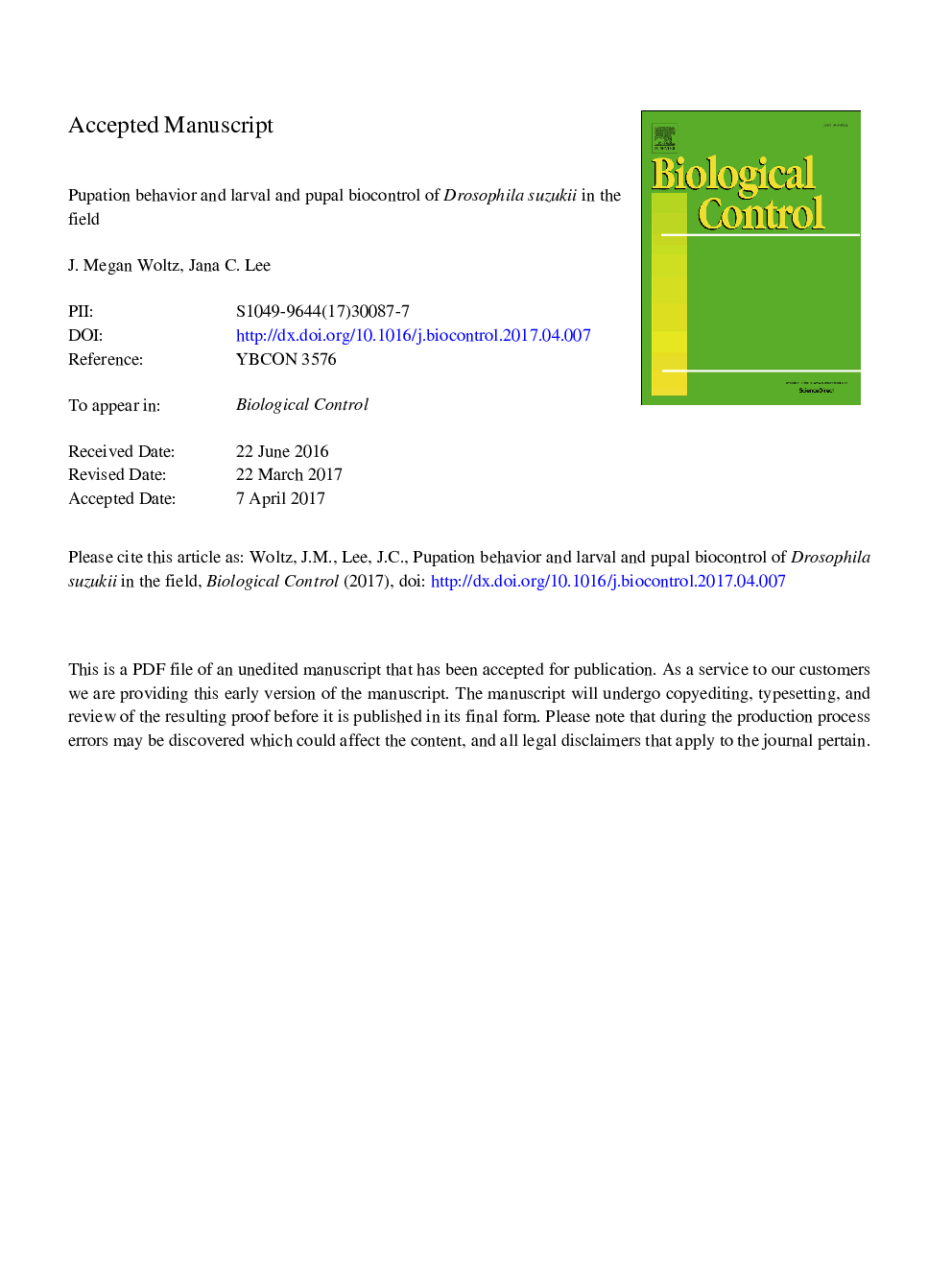| Article ID | Journal | Published Year | Pages | File Type |
|---|---|---|---|---|
| 5760626 | Biological Control | 2017 | 31 Pages |
Abstract
Biocontrol may play an important role in IPM of D. suzukii, a worldwide fruit crops pest. Predation on D. suzukii has been observed in the field, but rates have not been measured. Additionally, targeting juveniles may be more effective than targeting adults for reducing population sizes. The first objective of this study was to measure naturally-occurring levels of biocontrol on D. suzukii juveniles. Furthermore, D. suzukii may either pupate inside of fruit or emerge to pupate in the soil. Knowing the location of pupae can be important for developing biological and cultural control programs. The second objective of this study was to determine the proportion of D. suzukii pupating in fruit versus soil. Predator exclusion experiments were conducted to measure the ability of natural enemies to reduce D. suzukii larvae in strawberry and blueberry fruits, and pupae in the soil underneath strawberry, blueberry, and blackberry. Funnels were used to direct larvae dropping from infested blueberry and raspberry fruits into soil-filled containers. Significantly fewer D. suzukii larvae were extracted from fruits exposed to predators, representing a reduction in larval survival of 19-49%. Significantly fewer D. suzukii pupae were recovered from soil exposed to predators, representing a 61-91% decrease in pupae. In the pupation behavior experiment, 82-93% of pupae were found in soil, significantly more than were found in fruit. Ants and spiders were commonly observed in a variety of sampling methods, and ants were observed on video to remove pupae from the soil.
Related Topics
Life Sciences
Agricultural and Biological Sciences
Agronomy and Crop Science
Authors
J. Megan Woltz, Jana C. Lee,
